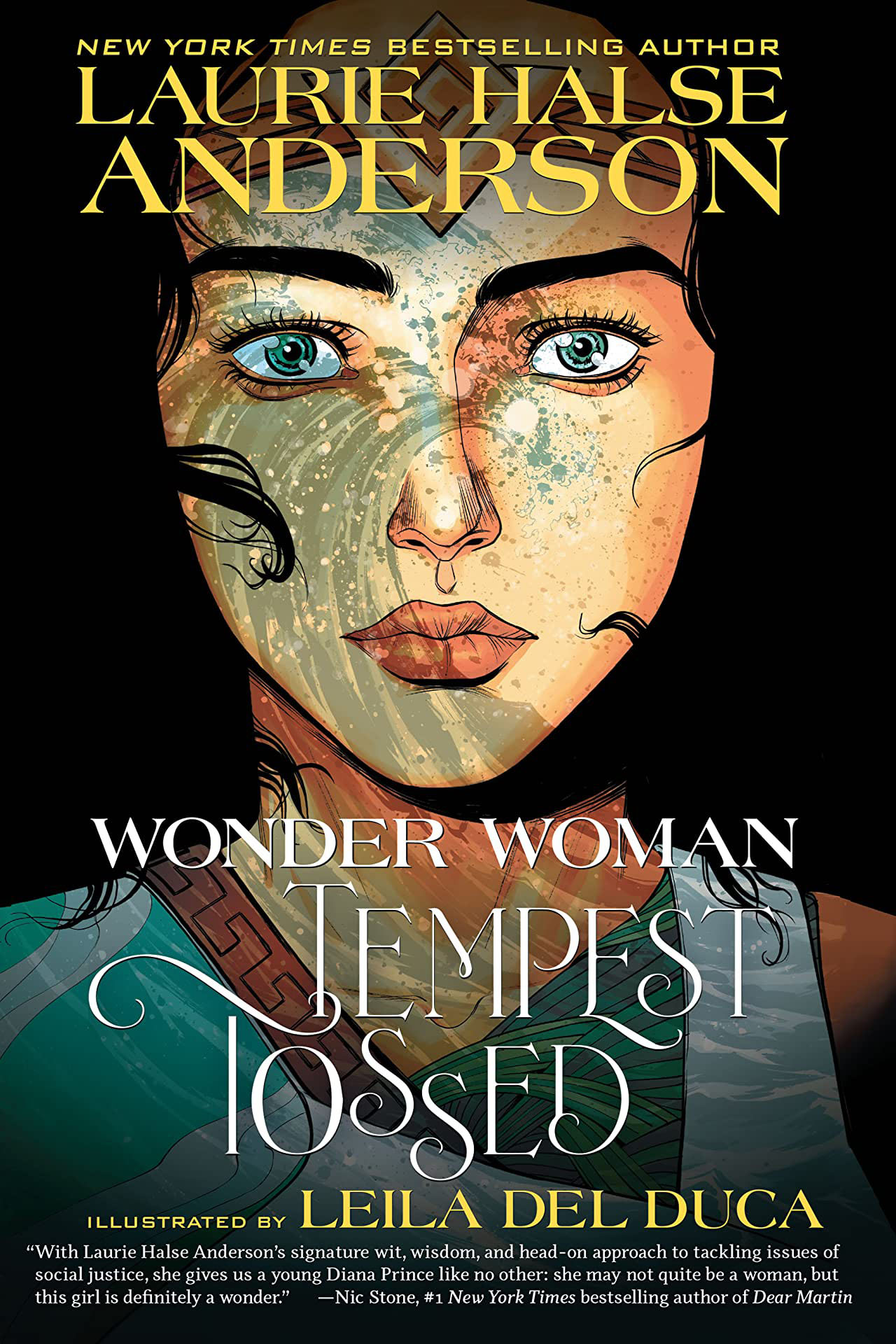Best Shots Review - Wonder Woman: Tempest Tossed 'a welcome reminder of hope'
From Laurie Halse Anderson, Leila Del Duca, Kelly Fitzpatrick, and Saida Temofonte


Wonder Woman: Tempest Tossed
Written by Laurie Halse Anderson
Art by Leila Del Duca and Kelly Fitzpatrick
Lettering by Saida Temofonte
Published by DC
'Rama Rating: 8 out of 10
One of the most enduring elements to Wonder Woman is her ability to shift with culture and society as we grow and hopefully mature. Wonder Woman: Tempest Tossed is another retelling of Diana’s origin and her first journey outside of Themyscira. A retelling that works diligently at weaving current social and political issues into Diana Prince, but more importantly, into the mind of the reader. And for the most part, it succeeds despite some missteps.
Writer Laurie Halse Anderson, perhaps best known for her 1999 prose novel Speak, drafts a new approach to Wonder Woman’s origin that is rarely seen. That of just an ordinary girl who, despite her extraordinary creation, just wants to be normal. To fit in and find her place within society. Anderson makes heavy use of captions as a form of internal monologue of Diana’s thoughts. Indeed, there are times Tempest Tossed reads more like a personal journal than a more traditional comic narrative. It’s a style that feels jarring at first, but as the story unfolds, might just grow on readers as a stylistic choice.

There are a few twists in regard to the Amazon myth that stand out, the highlight being the boundary of Themyscira weakening during times at war. It’s an interesting way of suggesting the Amazons share a burden to help the world when it is in the most need. Yet some of these changes feel misguided regarding how the Amazons treat those in need. Consider, for example, how the Amazons treat war refugees who wash up on their shores — it’s hard to believe Diana is the only person on the island who truly wishes to provide aid and shelter to those people. While I think I understand the reason Anderson made this choice, one to highlight fear and prejudgment across all cultures, it doesn’t ring true to have every Amazon push back against Diana.
Tempest Tossed gives the new takes on characters like Steve Trevor and Etta Candy. Both updates feel natural within this version of Wonder Woman and the world the creative team is building. And this book is very much about building and growing — Anderson commendably works hard to incorporate many current issues we are all facing, and Wonder Woman is perhaps the best character within DC to face these issues. However, Tempest Tossed works so hard at bringing these problems to light, it loses a sense of cohesion as a story. These are all snippets of the moment, seen through Diana’s eyes, and yet the reader never truly gets to see the process within Diana.

Visually, artist Leila Del Duca really shines in her pencil work. We immediately get a sense of grandness as Diana leads through a brief history of not only herself but her people. Her subtle use of facial tics and constant motion reveals an awkward side of Wonder Woman we rarely see — but this fits the tone of the book, as Diana struggles to find her calling. A small element which also is impressive is Del Duca’s constant motion — even when Diana should be still, Del Duca adds in a small twitch or turn that reminds the reader that the Amazing Amazon still isn’t grounded, that she still wonders what is expected of her. However, when the right moment comes, we immediately see the sure and confident hero we know. It’s a style that rewards taking your time to take in each panel for that payoff.
There is clearly a strong desire to present the world within Tempest Tossed that is like our own. As such, there is a large and diverse cast. Del Duca goes out of her way to make these characters feel like more than just color palette shifts. Drawing authentically diverse characters can be a tricky line to walk, lest one fall into caricature. Del Duca walks that line perfectly and in doing so helps to ground the book and help the reader make a personal connection. The colors from Kelly Fitzpatrick support that fluid style. There is a subtle use of earth tones within most of the book — even the more vibrant moments have shades of subtle darker tones. It adds an even greater sense of realism to an already well-grounded story. Which isn’t to say the creators are pulling away from the traditional superhero look — by choosing the moment to turn into the brighter palette, Wonder Woman shines even brighter. Letterer Saida Temofonte does some heavy lifting with the various language shifts. Something that only seems simple because we don’t notice it when done correctly.
Get the best comic news, insights, opinions, analysis and more!

DC is clearly aiming at an underrepresented audience and Wonder Woman: Tempest Tossed is no exception. The book is not without its flaws, but the authentic attempt to connect with new readers with something fresh outweighs my nitpicks. Whether you are new to Diana or have been with her for decades, Wonder Woman: Tempest Tossed is a welcome reminder of hope.


